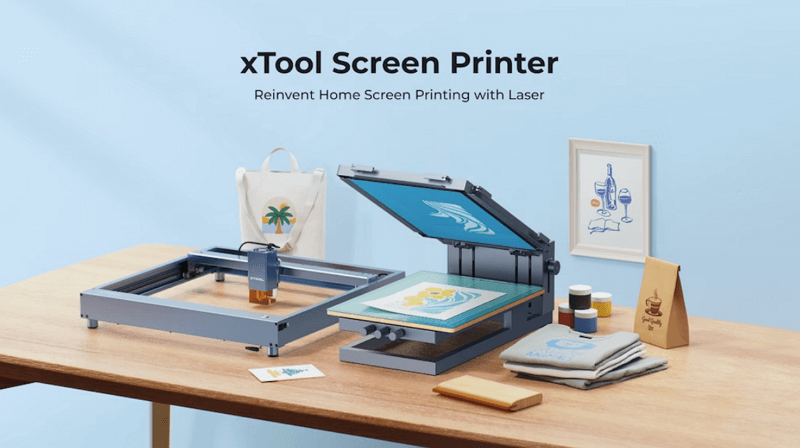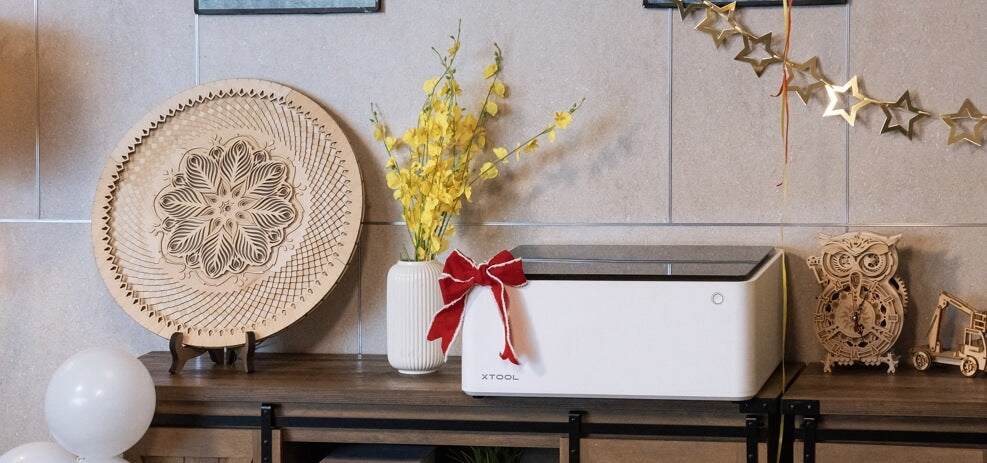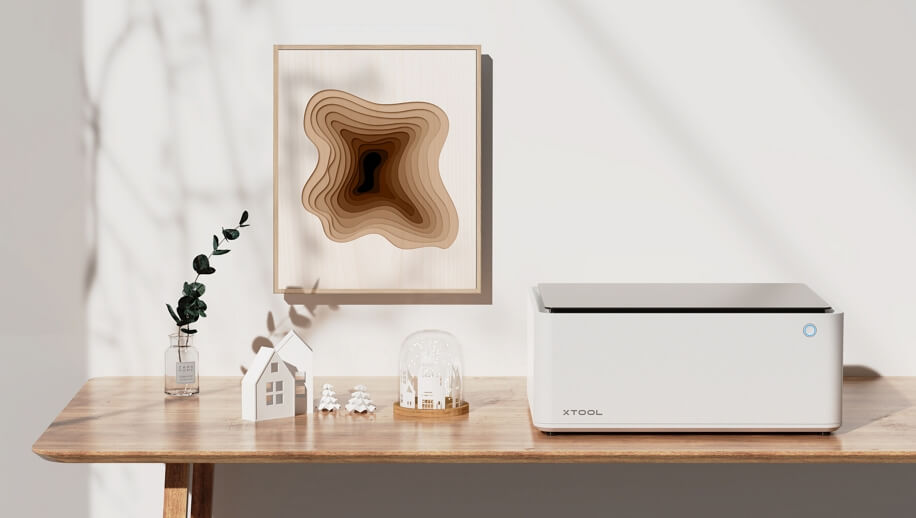How to Sell Art Online and Make Money in 2025

There are artists with top-notch creative expressions, but they seem to be lacking when it comes to selling their art online. To profit from your artwork, you need to find out what to sell, come up with the right prices for your artwork, and possibly take advantage of the print-on-demand marketplaces.
Before diving into steps to selling art online, you will need to know if selling art online in 2025 is a profitable business.
In This Article
- Is It Profitable to Sell Art Online?
- Steps to Sell Art Online
- FAQs on Selling Art Online
- Conclusion
Is It Profitable to Sell Art Online?
There is no simple answer to this question. The profitability of an artwork depends on lots of factors. But the good news is, the online art market is a booming industry, and there is a global demand for artwork. As an artist, you can make a living selling digital art files, original artwork, merchandise, prints, and lots of other art materials.
Unlike years back, getting people who are interested in your artwork is somewhat easy. All you need is to have a strong online presence, and possibly start showcasing your work in any of these top art selling websites.
Finally, selling art online comes with little overhead cost. Unlike physical stores, not much overhead resources are needed to set up an online store. You also have the flexibility to control your brand, set your prices, and manage your business at your own pace.
However, the online art market is somewhat saturated. To stand out from the crowd, you need to have a strong brand identity, an effective marketing strategy, and high-quality art.

Reinvent Art Prints
with Laser
Overall, selling art online is profitable. But there are lots of pieces that have to be put together before you can generate profit from your online art sale.
Steps to Sell Art Online
Here are easy steps to start selling art online.
Step 1: Decide What Art to Sell: Physical Art or Digital Art
You have the option of selling original artwork online. The sale of original artwork is somewhat rare — but you get to command a high price point.
You also have the option of selling digital prints (or files). The sale of digital files gives you the opportunity to sell the same item over and over again.
Aside from the sales of original artwork and digital files, you can opt to sell artwork from other artists. This strategy is possible if you have a network of trusted artists and websites for the arts.
Selling Original Art
Selling original art pieces is one of the best ways to launch a profitable online art business. Getting started involves identifying the right art that sells.
As you explore your artistic expression, consider incorporating technology into your creative process. Tools like the xTool laser machines can elevate your artwork, offering precision and versatility. They allow you to transform your artistic visions into tangible, intricate pieces that can captivate the modern art market.
Learn more:
- Laser Engraving: the Ultimate Guide
- Laser Cutting: the Ultimate Guide
- Laser Cut Art: Top 10 Projects
- How to Make DIY Canvas Art with a Laser Engraver?

Elevate Your Art Projects with xTool
Learn MoreSelling Copies of Digital Files, or Prints
If you're interested in selling a single piece of artwork over and over again, you have to opt for the sale of copies of your original digital files or prints. These copies can be sold in various sizes and formats.
Selling copies of your digital art gives you the option of selling to customers who desire to print your art on mugs, T-shirts, notebooks, or other items of their choice. Fortunately, there are lots of print-on-demand services to fasten these processes.
One of the major pros of these print-on-demand services is the low overhead cost that comes with using them. That is, the artists won't have to order a bunch of hoodies (or shirts) to sell. All they have to do is upload their digital artwork onto these print-on-demand platforms, and customers who find their artwork appealing will buy it.
Selling Art from Other Artists
If you've started generating constant sales through the sales of your artwork, you can spice up the shopping experience of your customers by adding artwork hosted by other artists to your online shops. This strategy helps you give your customers a variety of artworks to choose from.
Selling art from other artists is ideal for artists who have a robust network of other skilled artists, and also have a good marketing strategy. Without the right marketing strategy, it will be somewhat difficult to drive the right volume of traffic to your online store.
Step 2: Register Your Business
Having all your paperwork intact is a sure way to legally protect your art business from legal issues. You can start off by registering as a sole proprietorship. But to get the most out of a business structure, you need to register as an LLC. As an LLC, it becomes easy to track your business expenditure and hire extra hands to help you manage your business.
It's also worth noting that having a fully registered business is a prerequisite to getting an employer identification number (EIN) — and that is needed for setting up a business bank account. There are cases where a business license is needed before artists are allowed to sell their artwork. You need to do proper findings by going through the state's Business Division (or Secretary of State).
Step 3: Decide Where to Sell Your Art Online
Your choice of where to sell art online will either make or mar your art business. There are lots of online marketplaces out there, and your choice should be largely dependent on the kind of art you want to sell. Here are some places you should consider selling your art online.
Your eCommerce Store
Having a piece of real estate on the web is a sure way to build a consistent brand, and have a strong artistic presence. If you're an artist who sells digital products, reprints, and branded merch, you're better off creating an online store, a portfolio website, or a blog.
To get the most out of your eCommerce store, you need to build your online store using website builders that offer SEO optimization, blogging features, and robust content management system. Some common web builders you should consider are:
- WooCommerce + WordPress: WordPress is the largest content management system that offers SEO and blogging features. Integrating the WooCommerce plugin adds a more robust eCommerce feature. Interestingly, these are free platforms — but some learning curve is required, and you need a hosting platform.
- Wix: Wix is an all-in-one platform that comes with sleek eCommerce features. It also offers a superb user-friendly experience.
- Squarespace: The platform comes with some sleek aesthetics, and it's the best fit for creatives across multiple industries. Its SEO and content management functionality is superb — and it's a great fit for artists who reside in the United States.

Elevate Your Art Projects with xTool
Learn MoreOnline Marketplace
Artists have the option of selling digital products, printables, and other art items on online marketplaces like Amazon, Etsy, or eBay.
Setting up storefronts on these marketplaces is somewhat easy, and these platforms have an evergreen inflow of qualified traffic. There are no subscriptions on these platforms, but there are some fees attached to selling on these platforms. Here's a brief overview of three of these online marketplaces.
- Merch by Amazon: Artists sell vector designs, digital art, and other visual assets on Merch by Amazon.
- Etsy: It's the best fit for creatives who are looking to sell vintage and handmade items. It's also one of the best platforms for selling digital prints and products.
- eBay: It's an ideal platform for showcasing art items in auctions. This strategy will possibly boost the selling price of the art item.
Before using any of these online marketplaces, you will have to get a good grasp of how it works, and how to easily navigate through it.
Specialized Art Platforms (And Online Art Marketplaces)
Here are some online art marketplaces (and specialized art platforms) for artists.
- Saatchi Art: It's a great platform for artists who are looking to sell their artwork online. There's a thorough application process, and artists get about 60% of their profit. On the flip side, the artist handles the packaging cost while insurance and shipping are handled by the platform.
- Artfinder: It's a platform for artists who want to sell drawings, paintings, limited edition prints, collages, and digital works. There's a monthly subscription fee — and artists get to choose the right payment plan that suits their business.
- Artwork Archive: This platform pretty much focuses on the business and logistics side of art. It helps in assisting organizations, collectors, and artists in creating and organizing exhibitions for their artwork. Artwork Archive is a good fit for established artists, but it could be expensive for beginner artists who are looking to sell their artwork.
Graphic Assets Art Platforms
Here are two platforms for selling graphic assets.
- Creative Market: It's a platform for artists who sell mock-ups, vector designs, fonts, and 3D objects. Artists have the flexibility of setting their rates and setting up an online store with the platform.
- ArtCorgi: It's a platform where buyers go to purchase custom portraits. Artists are also given the opportunity to showcase their artwork on the platform.
Step 4: Price Your Artwork
As an artist, you need to figure out how to price your art. Your price tags will be largely dependent on the kind of art you sell. For instance, artists who sell original art pieces will likely set a high price tag on their artworks. After all, lots of effort was put into the creation of such artwork.
Artists who are keen on selling digital prints or copies of digital art items should lower their prices. After all, the production cost of these art items is relatively low. Selling copies of digital art items at a low price will attract a large number of buying audiences, and the artists get to sell a single art piece over and over again.
As an artist, high demand for your product is a good sign — and it signals time to gradually increase the price tag of your art item.
Step 5: Market Your Online Art Store
After establishing an online presence, the next step is to market your artwork. Effective marketing of your artwork helps you showcase your work to people who need what you have to offer. For instance, if your artwork is on online marketplaces like Etsy or Amazon, you can use ads to promote your listings on these platforms. Alternatively, you can grow a large social media following, and use your social media account to promote your artwork.
Here are some easy strategies to market your artwork online:
- Implement the right Search Engine Optimization (SEO) strategies so your website will rank high on search engine platforms
- Use pay-per-click ads
- Create a compelling Facebook Page
- Build a strong presence on other social media platforms like Instagram and Pinterest
- Promote your artwork within your existing network
- Collaborate with other artists to create a large project
FAQs on Selling Art Online
What’s the Best Way to Sell Art Online?
The best way to sell art online is dependent on your style and target audience. However, you can get started by creating an online store or using online galleries. You can also take advantage of print-on-demand services to increase your earnings.
What Is the Best Site to Sell My Art?
Your choice of site should be dependent on the kind of artwork you're selling. Setting up your online store using Shopify is the best fit for artists who sell original artwork. Artists who will need print-on-demand services should opt for platforms like Society6.
What Is the Most Profitable Art to Sell Online?
It's no news that some arts sell better than others. This guide reveals some types of best-selling art.
Conclusion
Selling art online is not a complex process. You just have to figure out how to sell, what to sell, and where to sell art online.
You can start by creating your online store or making use of online art marketplaces. If your primary objective is to sell a piece of digital art over and over again, you're better off using print-on-demand services.
Focus on creating a strong online presence. If you have an online store, you can use the right SEO strategy to boost your search ranking.
Now you know how to sell art online and make money in 2025, what kind of artwork will you be selling online?

